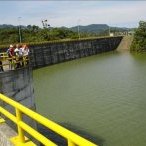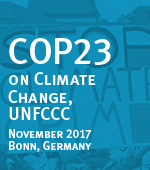
15 June 2009 | Interviews | Climate Justice and Energy
Step by Step
Colombia: License denied to Urra II; Opposers Continue Alert
Download: MP3 (2 Mb)
The ruling of the Colombian Ministry of Environment is conclusive and does not leave room for doubt. The building of the hydroelectric central Urra II is environmentally inviable, it would flood most of Paramillo natural park, therefore it cannot have the corresponding environmental license, according to the decision made public last week.
But the promoters of the megaproject in the lower basin of river Sinu, such as the Ministry of Energy and Mining, will appeal the ministerial decision before the State Council.
Juan Jose Lopez Negrete, project coordinator of the Associatoin of Farmers for Community Development of Ciénaga Grande del Bajo Sinú (Asprocig), and the main local leader of the struggle against dams, said “We won this battle, but this is not over”.
Even though the Ministry of Environment welcomed the decision, the residents of Sinu will not give up the fight. They will continue alert in case of an imminent new attack of the promoters of Urra.
The latest experience is not encouraging: the first phase of Urra caused an environmental disaster, which damaged thousands of peasants, fisherfolk and embera katio indigenous communities.
“Urra project has jeopardized the biodiversity of the whole basin and the harmony of the local communities with their ecosystems, which are critical for the planet’s health”, Lopez Negrete said.
Asprocig data are eloquent. They show the kind of model represented by the dams. The 63,000 hectares of wetlands lost to Urra I are being used for GM corn and cotton monoculture plantations.
Also, fishing, which was vital for the livelihood of the communities, fell 80% and water stagnation led to the outbreak of diseases such as malaria and gastrointestinal problems.
Meanwhile, the report of the Colombian Ministry of Environment points that another hydroelectric project, El Quimbo, will flood 8,000 hectares of land to produce nearly 400MW, while Urra II aimed to flood 54,000 hectares to generate 350MW.
López Negrete believes that comparing the energy generated and the territories flooded is a totally economicist approach, which disregards that Colombia currently has an energy surplus (most of Urra production is for export). In this case, Asprocig’s leader said the main aspect to bear in mind is what will happen with the 400,000 hectares of wetlands of the river Sinu’s basin, in an extremely attractive area for the big Colombian industries.
“What’s at stake is the control of the river basin, not to the benefit of the poor by controlling the floods, as they claim, but by controlling the territory to establish exporting enclaves”, he concluded.







